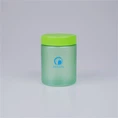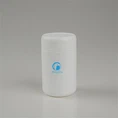Protein powder is a staple for many health-conscious consumers, but proper storage is essential to maintain its quality and effectiveness. One common question is: How long can protein powder be stored in a glass jar?
Why Packaging Matters for Protein Powder
Protein powder is sensitive to several environmental factors:
- Moisture
- Light exposure
- Heat
- Oxygen
Poor storage can lead to clumping, nutrient degradation, or even spoilage. That's why choosing the right container - such as a glass jar or plastic bottle - plays a key role in shelf life.
Storage in Glass Jars: Pros and Limitations
Benefits:
Non-reactive material: Glass does not leach chemicals or interact with the powder, even over long periods.
Air-tight sealing: Glass jars with good lids can effectively prevent moisture and air from entering.
Odor-resistant: Glass does not retain smells or flavors from previous contents.
Shelf Life:
If stored in a clean, dry, dark, and cool environment, protein powder in a glass jar can retain its quality for up to 18–24 months, assuming the original packaging is also within date. Always use air-tight lids to minimize oxygen and moisture exposure.
Note: Glass is fragile. Be cautious in handling, especially in humid or high-traffic areas like gyms or kitchens.
Storage in Plastic Bottles: Is It a Good Alternative?
Plastic containers - especially HDPE (High-Density Polyethylene) and PET (Polyethylene Terephthalate) - are commonly used for commercial protein powder packaging. Here's how they compare:
| Feature | Glass Jar | Plastic Bottle (HDPE/PET) |
|---|---|---|
| Chemical Stability | Excellent | Good (food-grade plastics) |
| Light Protection | Often transparent (needs dark storage) | Available in opaque/UV-blocking types |
| Moisture/Oxygen Barrier | Good (with proper lid) | Designed for sealing efficiency |
| Durability | Fragile | Shatterproof and portable |
| Weight | Heavy | Lightweight |
| Shelf Life (sealed) | 18–24 months | 18–24 months |
What Affects Shelf Life Regardless of Container?
Regardless of whether you use glass or plastic, the following conditions are key:
- Cool temperatures (15–25°C / 59–77°F)
- Low humidity
- No direct sunlight
- No exposure to strong odors or chemicals
- Container must be tightly sealed after each use
Once opened, always check for signs of spoilage: clumps, foul odor, discoloration, or changes in taste.
















